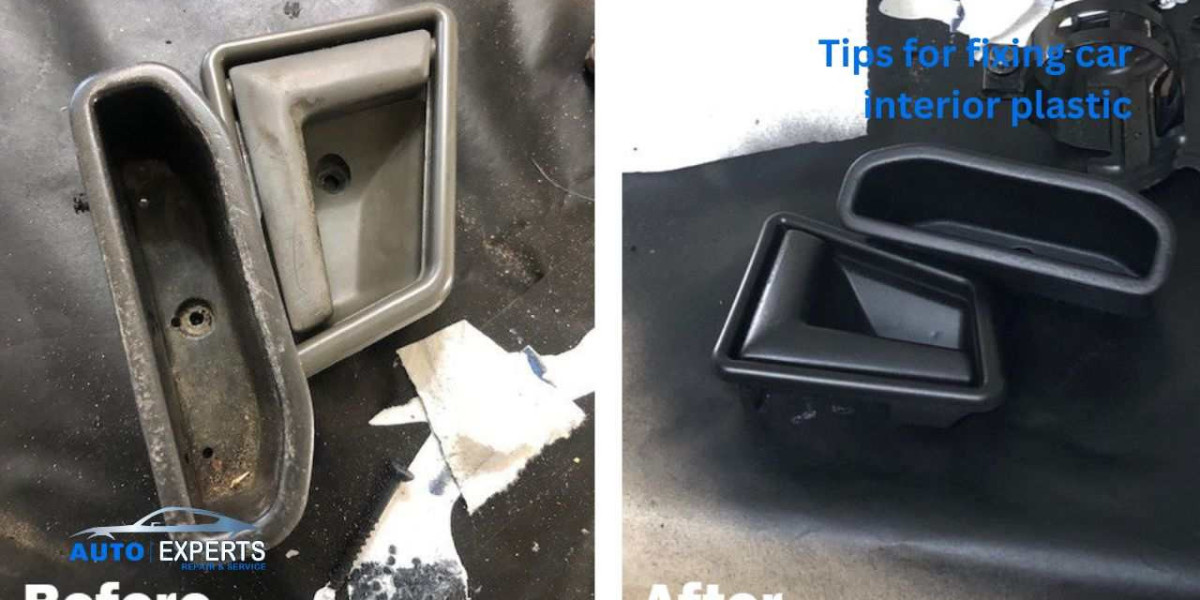Maintaining your car's interior can significantly enhance both its appearance and value. One common issue many car owners face is damaged or worn-out plastic components. Whether it's a cracked dashboard, scratched door panels, or faded trim, fixing these plastic parts can make a noticeable difference. Here’s a practical guide with essential tips to help you repair your car’s interior plastic to its former glory.
1. Assess the Damage
Before diving into repairs, it’s crucial to evaluate the extent of the damage. Minor scratches and scuffs might require different treatments than deep cracks or broken pieces. A thorough assessment helps you choose the most effective repair method and materials.
2. Clean the Surface
Start by cleaning the affected area. Dust, dirt, and grease can interfere with the repair process. Use a mild soap solution and a soft cloth to wipe down the surface. For stubborn grime, a dedicated automotive interior cleaner can be used. Ensure the plastic is completely dry before proceeding with any repair.
3. Use a Plastic Repair Kit
For minor scratches and small cracks, a plastic repair kit can be very effective. These kits typically include fillers, sanding tools, and instructions. Follow the kit’s directions carefully:
- Fill the Scratch: Apply the filler into the scratch or crack. Smooth it out using the provided tools.
- Sand the Area: Once the filler is dry, sand the area gently to blend it with the surrounding plastic.
- Polish the Surface: After sanding, polish the area to restore its shine and texture.
4. Apply a Plastic Restorer
For faded or discolored plastic, a plastic restorer can help rejuvenate its appearance. These products are designed to bring back the original color and shine of plastic surfaces. Apply the restorer according to the manufacturer's instructions:
- Apply the Product: Use a clean cloth to apply the restorer evenly over the plastic surface.
- Wipe Off Excess: After application, wipe off any excess product to prevent streaking.
- Buff the Surface: Buff the plastic with a dry cloth to enhance the shine and ensure an even finish.
5. Fix Cracks and Broken Parts
Cracks and broken plastic parts require a more involved repair process:
- Reinforce with Plastic Weld: For larger cracks, a plastic welding kit can be used. This involves melting the plastic to fuse it back together. Ensure you follow safety precautions and manufacturer instructions for this process.
- Replace Broken Parts: If a plastic piece is too damaged to repair effectively, consider replacing it. Many auto parts stores offer replacement parts for various car models.
6. Prevent Future Damage
Taking steps to prevent future damage can save you time and money:
- Use Interior Protectant: Regularly applying an interior protectant can help shield plastic surfaces from UV rays and wear.
- Avoid Harsh Chemicals: When cleaning, avoid harsh chemicals that can degrade plastic over time.
- Handle with Care: Be mindful of how you use and handle your car’s interior components to prevent scratches and dents.
7. Consult a Professional
If you’re unsure about tackling the repairs yourself or if the damage is extensive, consulting a professional might be the best option. Auto interior repair specialists can provide expert advice and high-quality repairs.
Conclusion
Fixing car interior plastic doesn’t have to be a daunting task. With the right tools and techniques, you can restore the appearance and functionality of your car’s interior components. By following these tips, you can ensure your car’s interior remains in top condition, enhancing both its aesthetic appeal and overall value. Regular maintenance and prompt repairs will keep your car looking and feeling as good as new for years to come.








